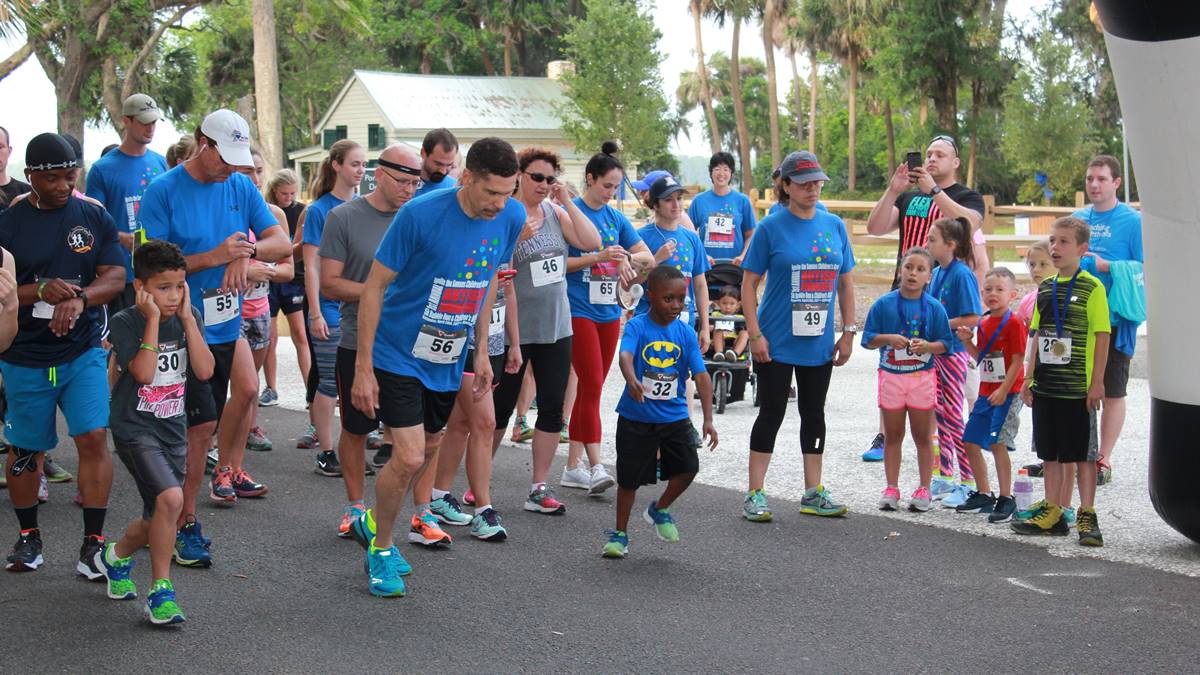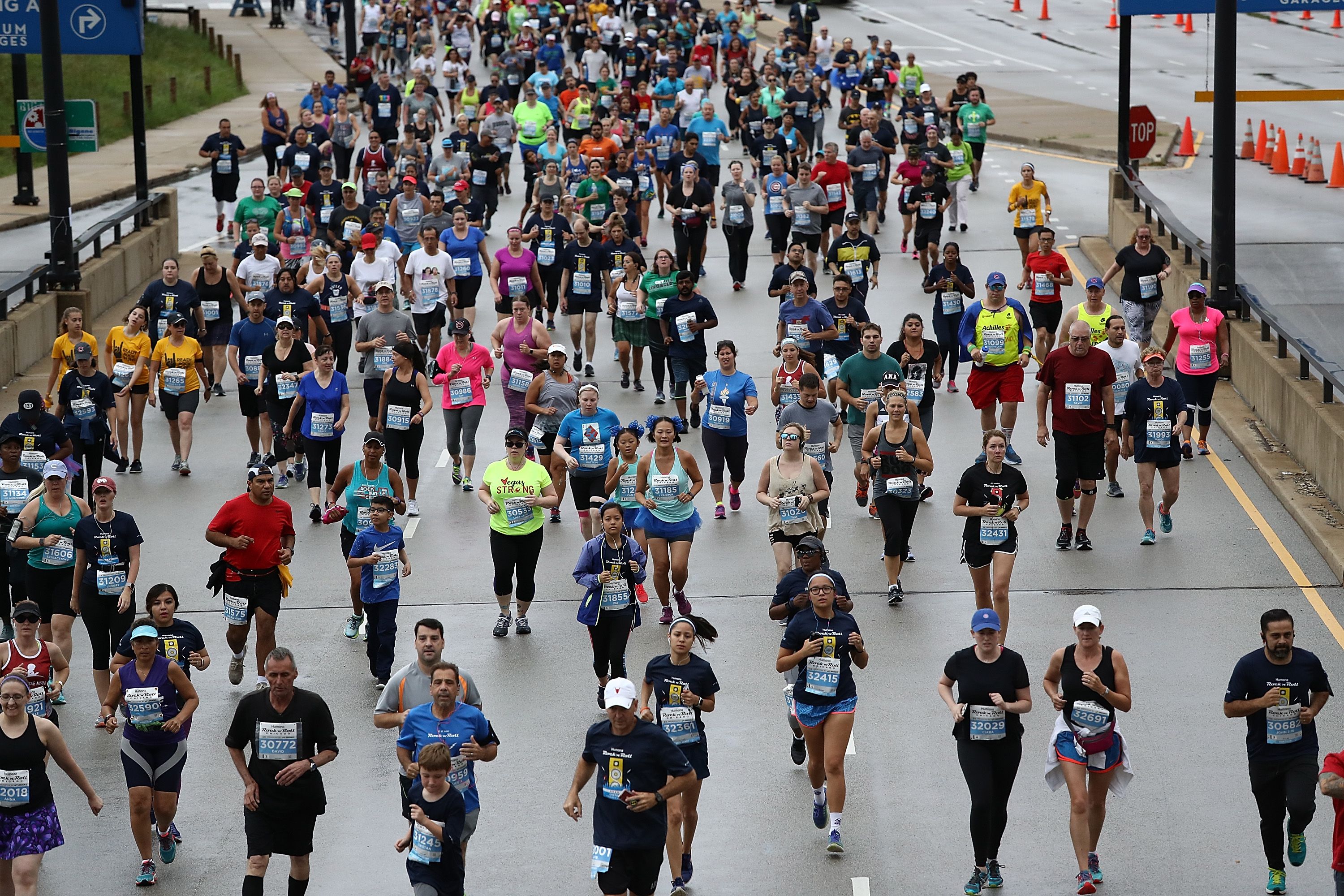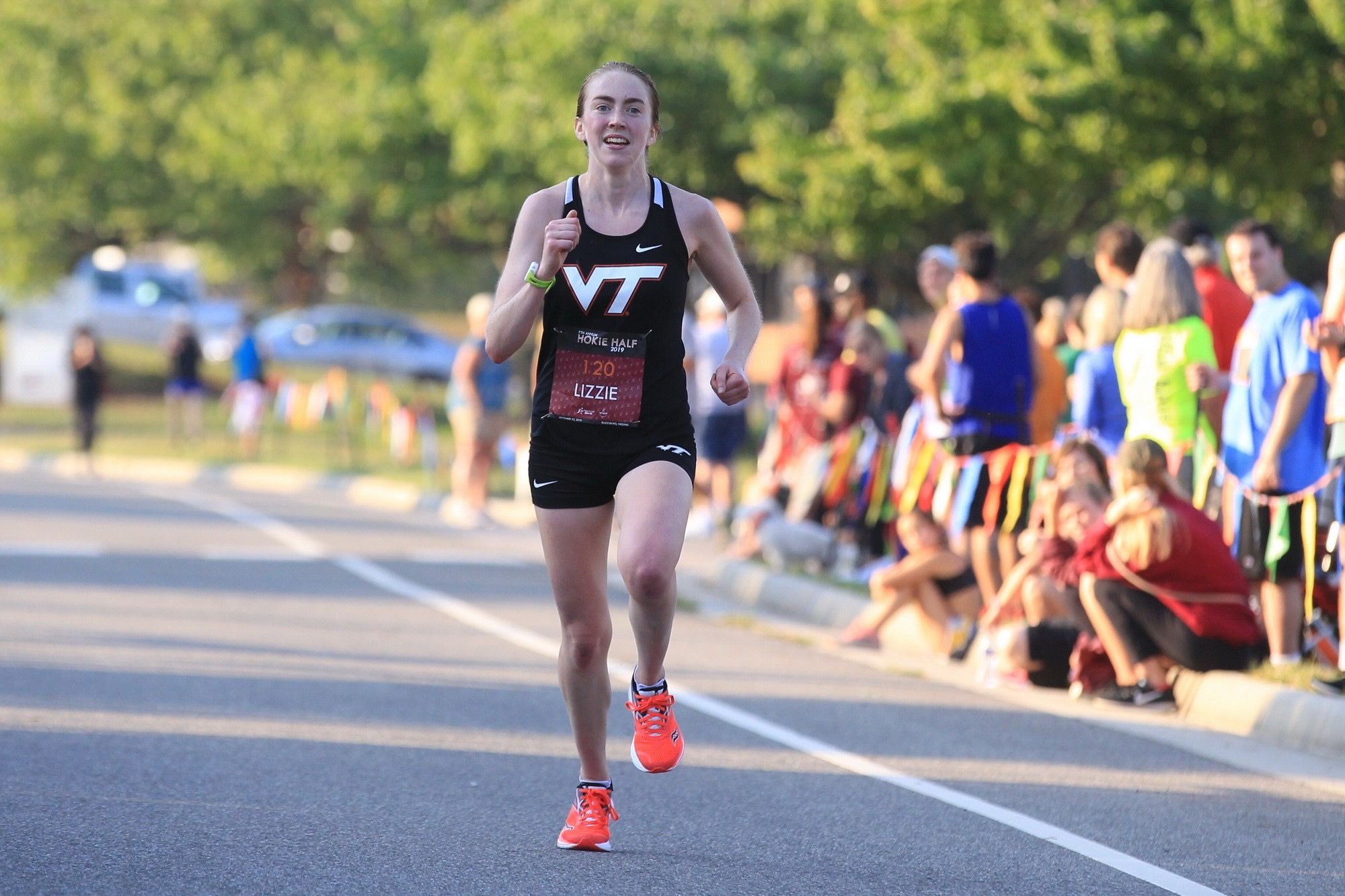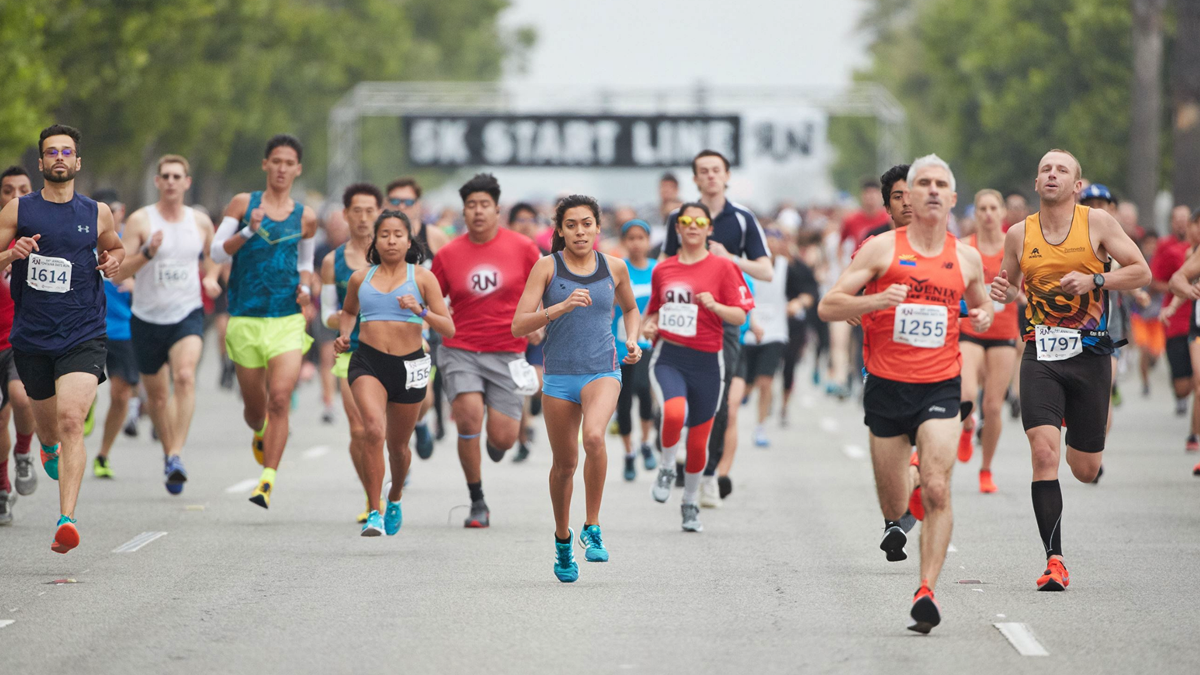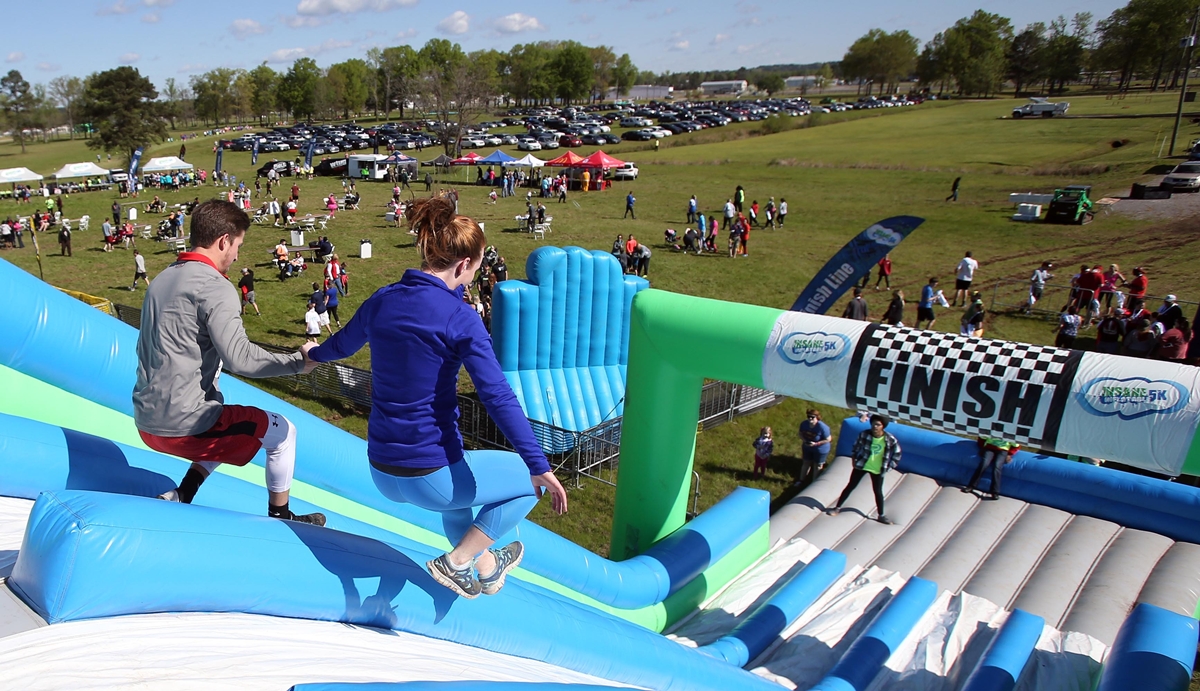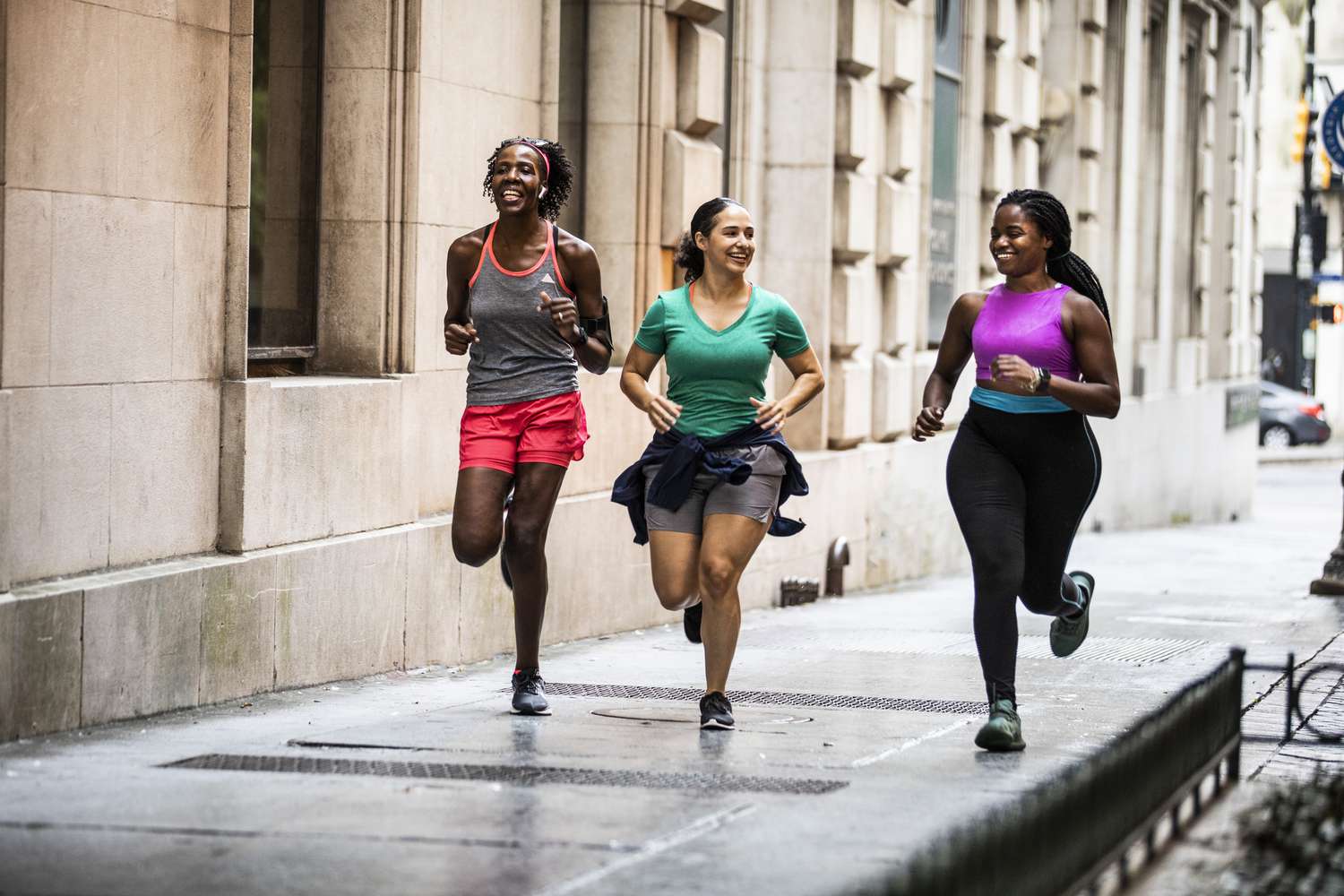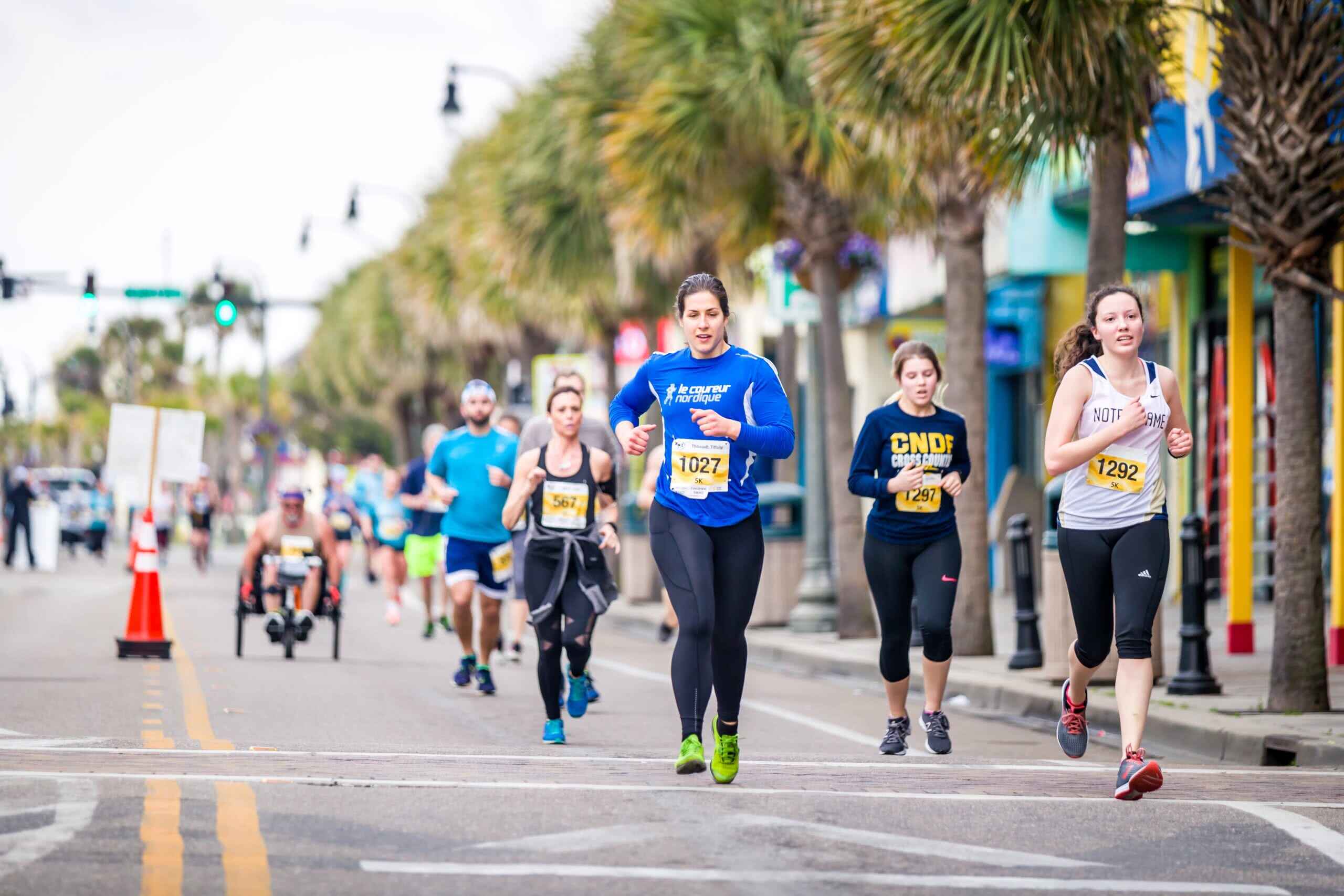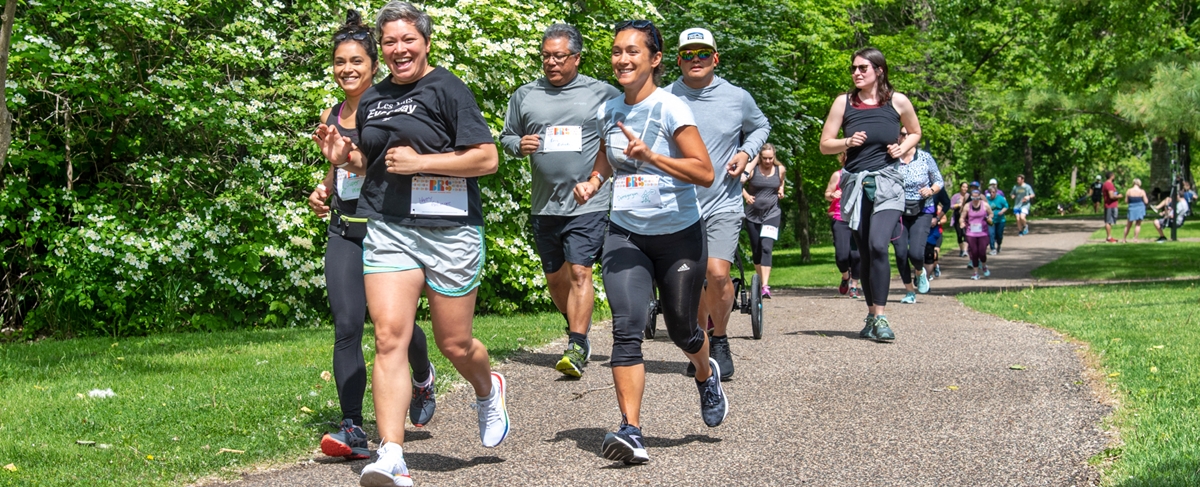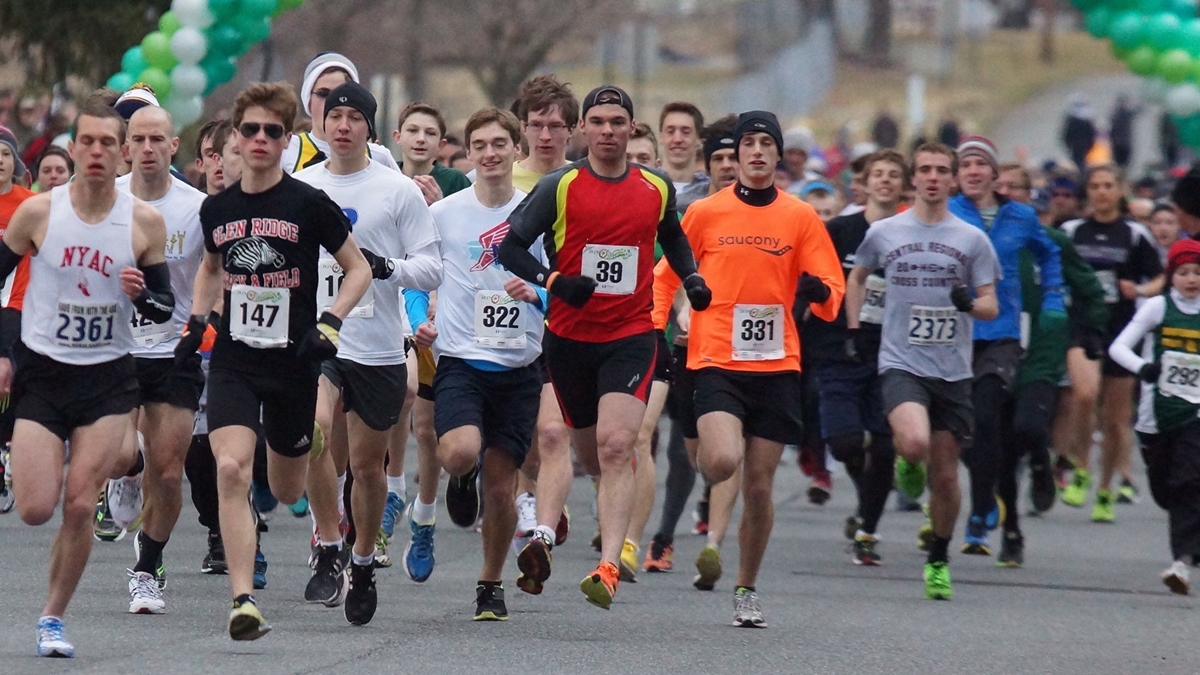

Featured
Why Is It Called A 5K Run
Modified: January 2, 2024
Discover the reasons behind the name of a 5K run in our featured article. Uncover the history and significance of this popular distance.
Introduction
5K runs have become immensely popular in recent years, attracting people of all ages and fitness levels. Whether you are a seasoned runner or just starting your fitness journey, participating in a 5K race can be a thrilling and rewarding experience. But have you ever wondered why it is called a “5K” run? In this article, we will explore the history and origins of the term “5K” and shed light on why this distance has become so popular in the running community.
The term “5K” refers to a race that covers a distance of 5 kilometers, which is equivalent to approximately 3.1 miles. This distance is seen as a manageable challenge for both experienced runners and beginners looking to test their endurance. With its relatively short distance, the 5K run offers a perfect balance between pushing your limits and providing a sense of accomplishment.
5K races are often organized as part of larger running events, such as marathons or charity runs, attracting participants from all walks of life. One of the reasons for the widespread appeal of 5K runs is their accessibility. Unlike longer races, such as half-marathons or marathons, which require months of training and preparation, the 5K distance allows individuals with varying fitness levels to participate and enjoy the event.
But why specifically 5 kilometers? The choice of this distance can be traced back to the origins of running races. In ancient Greece, the birthplace of the Olympic Games, a race known as the “stadion” was a popular sporting event. This race covered a distance of approximately 200 meters, roughly equivalent to the length of the stadium.
Over time, the “stadion” evolved into longer race distances, including the “dolichos,” a race that covered around 5 kilometers. The dolichos was an endurance race, demanding both physical strength and mental fortitude from participants. It is believed that the influence of these ancient races led to the adoption of the 5K distance in modern running events.
Today, 5K runs have become far more than just a race. They have evolved into community events that bring people together for a common cause. Many 5K runs are organized as fundraisers for charities or to raise awareness for specific causes, making them a great way to give back and make a positive impact.
In the next sections, we will delve deeper into the history of 5K runs and explore the benefits of participating in these races. So, let’s lace up our running shoes and embark on a journey to discover the fascinating world of 5K runs!
History of 5K Runs
The roots of 5K runs can be traced back to the running boom of the 1970s. This period marked a significant shift in the perception of running as a recreational activity and led to the popularity of organized road races.
Prior to the 1970s, running was primarily seen as a competitive sport, with track and field events dominating the scene. However, a newfound interest in fitness and a desire to lead healthier lifestyles sparked a surge in recreational running. This shift in mindset resulted in the emergence of local running clubs and the organization of community races, including the 5K distance.
The 5K race distance gained traction due to its accessibility and feasibility for runners of different abilities. It provided an opportunity for both experienced and novice runners to participate in organized races without the need for extensive training or committing to longer distances like the 10K or marathon.
As the popularity of 5K runs grew, so did the number of events and participants. Local communities, fitness organizations, and charitable foundations began organizing 5K races to promote fitness and raise funds for various causes. These races became a platform for individuals to support charities they were passionate about while engaging in physical activity.
One of the significant milestones in the history of 5K runs was the establishment of the “Race for the Cure” series by the Susan G. Komen Foundation in 1983. These 5K races aimed to raise awareness and funds for breast cancer research. Today, the Race for the Cure series is one of the largest 5K events worldwide, with millions of participants joining in to support the cause.
5K races also gained recognition as a stepping stone for those looking to progress to longer distances such as the 10K, half-marathon, or marathon. The structured training programs and friendly environment of 5K races provided runners with the confidence and motivation to take on more significant challenges in their running journey.
In recent years, the popularity of 5K runs has continued to surge. Runners are drawn to the energetic atmosphere, camaraderie among participants, and the sense of accomplishment that comes with crossing the finish line. The inclusivity and accessibility of 5K races have made them an integral part of the running community, catering to individuals of all ages, backgrounds, and fitness levels.
From humble beginnings to becoming a global phenomenon, the history of 5K runs showcases the enduring appeal and impact they have had on the running world. In the next section, let’s explore the origins of the term “5K” and shed light on its relationship with distance measurement.
Origins of the Term “5K”
The term “5K” is derived from the metric system, specifically the unit of measurement called the kilometer. The metric system was officially adopted by many countries in the late 18th and early 19th centuries and gained widespread usage globally over time.
Originally, races were measured in miles, a unit of measurement commonly used in the United States and some other countries. However, as the popularity of running extended beyond national borders, the need for a standardized unit of measurement arose, leading to the acceptance of kilometers as the preferred measurement for road races.
The “K” in “5K” stands for kilometer, which is equivalent to 0.62137 miles. The kilometer is based on the meter, the standard unit of length in the metric system. One kilometer is equal to 1000 meters, making it a convenient and easily divisible distance for race courses.
The adoption of kilometers as the standard unit of measurement for running races was a gradual process. It was driven by the growing international nature of athletic events and the desire for uniformity and consistency in race distances.
The shift from mile-based races to kilometer-based races gained momentum in the 1960s and 1970s, as the running community sought to align with the metric system used in many other aspects of life. The International Association of Athletics Federations (IAAF) played a significant role in this transition by standardizing race distances, including the 5K.
Today, the 5K distance is recognized as one of the most popular and widely run race distances worldwide. It has become ingrained in the vocabulary of runners and is commonly used to refer to races of similar distances, regardless of whether they are precisely 5 kilometers long or not.
While the term “5K” is used to represent a specific distance, it is important to note that variations may exist in different countries and regions. Some races may be advertised as 5 kilometers but actually measure slightly shorter or longer distances due to course layout or logistical constraints.
The adoption of the term “5K” has not only enhanced the global consistency of race distances but also contributed to fostering a sense of unity among runners worldwide. Whether you are participating in a 5K race in the United States, Europe, or Asia, the term remains universally understood, emphasizing the bond shared by the running community.
Now that we have explored the origins of the term “5K” and its connection to distance measurement, let’s continue our journey and delve into the popularity and accessibility of 5K runs.
Conversion from Miles to Kilometers
The conversion from miles to kilometers is an essential aspect of understanding the distance of a 5K run. While the United States continues to primarily use miles as its unit of distance measurement, the metric system, which includes kilometers, is widely adopted worldwide.
To convert miles to kilometers, you can use a simple mathematical formula. One mile is equivalent to approximately 1.60934 kilometers. Therefore, to convert miles to kilometers, you multiply the number of miles by 1.60934.
For example, if a race is advertised as a 5K run, you can calculate its equivalent distance in miles by dividing 5 by 1.60934. The result is approximately 3.10686 miles, rounded to 3.1 miles. Hence, a 5K run is approximately 3.1 miles long.
While this conversion may seem straightforward, it is crucial to note that race organizers may round their advertised distances to the nearest whole number for simplicity. Thus, a race promoted as a 5K run may be slightly shorter or longer than the precise 3.1-mile distance.
The conversion from miles to kilometers becomes particularly significant for international runners or those participating in races outside of their home country. Understanding the metric system and being able to determine the distance in kilometers allows runners to better prepare and set their pace during races.
The usage of kilometers as the standard distance measurement for races has streamlined the global running community and facilitated comparison and communication among runners worldwide. It has also eliminated the need for separate conversion calculations when discussing race distances with fellow runners from different countries.
Moreover, the use of kilometers in race measurements has simplified race planning and course design. With the metric system’s decimal-based nature, it is easier to create courses of precise distances, ensuring accuracy and fairness for all runners.
Overall, the conversion from miles to kilometers is essential for understanding and participating in 5K runs. While the United States primarily uses the mile as its unit of distance measurement, the popularity of 5K races globally necessitates familiarity with kilometers. Being able to convert between the two systems helps create a more inclusive and unified running community.
Now that we have explored the conversion from miles to kilometers and its significance for 5K runs, let’s move on to examine the popularity and accessibility of these races.
Popularity and Accessibility of 5K Runs
5K runs have skyrocketed in popularity over the years, attracting individuals from diverse backgrounds and fitness levels. The combination of their manageable distance, inclusivity, and the vibrant atmosphere surrounding these events has contributed to their widespread appeal.
One of the reasons for the popularity of 5K runs is their accessibility. Unlike longer races, such as half-marathons or marathons, which often require intense training and preparation, 5K runs offer a more approachable distance. This accessibility makes them appealing to both experienced runners looking for a shorter race and beginners seeking to challenge themselves.
Another factor that contributes to the popularity of 5K runs is the camaraderie and sense of community they foster. These races often attract a large number of participants, creating a supportive and energetic atmosphere. Runners and walkers of all ages and abilities come together to celebrate fitness, personal achievement, and sometimes, the support of charitable causes.
5K runs have become more than just races; they have evolved into social events that bring communities together. Many 5K events are organized as fundraisers for charities, providing an opportunity for participants to contribute to a cause they care about. The combination of exercise and giving back creates a powerful motivation for individuals to participate.
Moreover, the accessibility of 5K races extends beyond the physical aspect. Many events offer various registration options, such as individual entries, family entries, and even virtual races, allowing participants to choose the setting and time that suits them best. This flexibility broadens the accessibility of 5K runs, enabling participation for individuals with different scheduling constraints or geographical locations.
Furthermore, 5K runs often attract participants beyond just dedicated runners. Families, friends, and coworkers gather to join in the fun, supporting and cheering each other along the race route. The inclusivity and festive nature of these events make them an appealing choice for individuals seeking a healthy and enjoyable activity to share with loved ones.
The popularity and accessibility of 5K runs have also been amplified by advancements in technology. Online platforms and smartphone applications make it easier than ever to find and register for 5K races in various locations. Runners can also track their progress, connect with fellow participants, and share their experiences through social media platforms.
As a result of these factors, 5K runs have become a staple in the running community and beyond. Their popularity shows no signs of slowing down, with countless events organized worldwide and growing participation rates each year.
In the next section, let’s explore the numerous benefits that come with participating in 5K runs, both for physical health and overall well-being.
Benefits of Participating in 5K Runs
Participating in 5K runs offers a multitude of benefits for both physical health and overall well-being. Whether you are an avid runner or new to the world of running, here are some of the advantages you can reap by taking part in these exciting events.
Improved cardiovascular health: Engaging in regular physical activity, such as 5K runs, can help strengthen your heart and improve cardiovascular fitness. Running at a moderate intensity increases blood circulation, lowers blood pressure, and reduces the risk of heart disease.
Weight management: Running is a highly effective way to burn calories and maintain a healthy weight. By participating in 5K races, you can boost your metabolism, burn excess fat, and build lean muscle, all of which contribute to weight management.
Increased endurance and stamina: Consistent participation in 5K runs can significantly increase your endurance and stamina. As you train and push your limits, your body becomes more efficient at utilizing oxygen, allowing you to run longer distances with ease.
Stress relief: Running releases endorphins, the body’s natural mood-boosting chemicals, which can help reduce stress and improve overall mental well-being. Participating in 5K runs provides an opportunity to disconnect from daily stressors, clear your mind, and experience a sense of accomplishment.
Social connections: 5K races bring together a diverse community of runners and provide a platform for socializing and making new connections. Whether you run with friends, join a running group, or strike up conversations with fellow participants, these events offer a sense of camaraderie and the chance to build lasting relationships.
Setting and achieving goals: Training for and completing a 5K run allows you to set tangible goals and work towards accomplishing them. Crossing the finish line of a 5K race provides a sense of achievement, boosts confidence, and motivates you to continue challenging yourself in other areas of life.
Improved mental well-being: Running has been shown to have positive effects on mental health, including reducing symptoms of depression and anxiety. The sense of accomplishment, increased self-esteem, and improved brain function associated with participating in 5K runs can contribute to enhanced mental well-being.
Supporting charitable causes: Many 5K runs are organized as fundraisers for charities or to raise awareness for specific causes. By participating in these events, you have the opportunity to make a positive impact, contribute to important societal issues, and give back to the community.
Overall fitness: Engaging in 5K runs consistently helps improve your overall fitness level. It enhances muscle strength, flexibility, and coordination, providing a full-body workout that targets various muscle groups.
Motivation and discipline: Training for 5K runs requires dedication, discipline, and regular exercise. Participating in these races helps develop healthy habits and fosters a sense of motivation to maintain an active lifestyle beyond the event itself.
The benefits of participating in 5K runs extend beyond physical health, encompassing mental well-being, social connections, and personal growth. These races provide a platform to challenge yourself, make meaningful connections, and contribute to worthy causes. So, lace up your running shoes and experience the numerous advantages of joining the vibrant world of 5K runs!
Conclusion
5K runs have taken the running world by storm, captivating individuals of all ages and fitness levels. The history and origins of the term “5K” date back to ancient racing events and the adoption of the metric system. This 5-kilometer distance has gained popularity due to its accessibility and feasibility for runners worldwide.
Today, 5K runs are not only about the race itself; they have evolved into community events that promote fitness, camaraderie, and support for charitable causes. The inclusivity and vibrant atmosphere surrounding these races have contributed to their widespread appeal and continued growth.
Participating in 5K runs brings numerous benefits, both physical and mental. It improves cardiovascular health, helps manage weight, builds endurance, relieves stress, and fosters social connections. These events also provide opportunities for personal growth, goal setting, and supporting important causes.
The popularity and accessibility of 5K runs have been amplified by advancements in technology and the global adoption of the metric system. Runners can easily find and register for races online, track their progress, and connect with the running community worldwide.
As 5K runs continue to thrive, so does the sense of unity and motivation within the running community. Whether you are a seasoned runner or just beginning your fitness journey, participating in a 5K race can be a gratifying experience that pushes your boundaries and leaves you with a sense of accomplishment.
So, lace up your running shoes, join the vibrant world of 5K runs, and embrace the opportunity to challenge yourself, connect with others, and make a positive impact. The journey awaits, and the finish line is just a few strides away.
